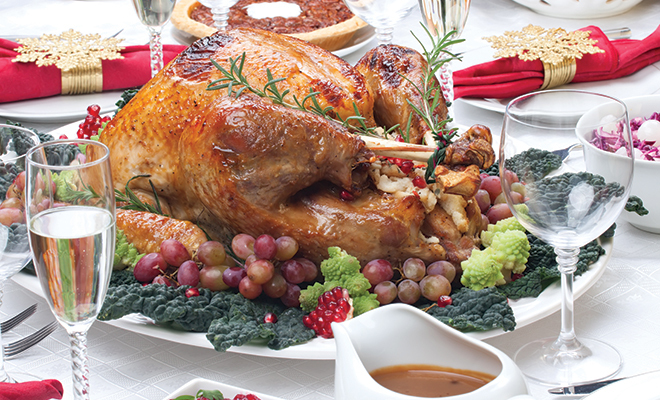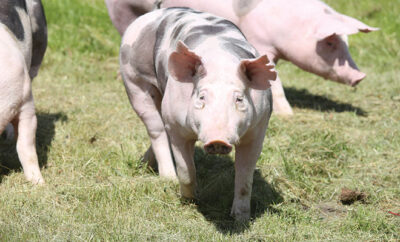
Here’s to cooking safely
Holidays mean festive meals, and festive meals mean planning–choosing recipes, creating shopping lists, and food preparation. Holiday traditions are built around favorite recipes, but holiday stress can add frustration to the menu. Plenty of people may be putting together their first dinner party, or holiday meal, and that takes stress to a new level.
In the midst of all that planning comes an added level of caution. Whether you’re cooking or arranging a cooperative pot luck among family and friends, it’s important to make food safety part of the planning process. That planning may become second nature over time, but it’s good to review a culinary game plan for basic kitchen safety. After all the work of putting together a holiday meal, nobody wants it ruined by foodborne illness.
Foodborne illness during the holidays may come from several sources: frozen foods that are not thawed properly; cross-contamination of food while it’s being prepared; failing to cook foods at the right temperature; and failing to store food properly after it’s cooked. We’ll take a look at each of these sources to reduce the risk of foodborne illness.
One of the first rules of cooking at any time of year is “clean as you go.” It’s a good rule, especially with complex holiday dishes. Your kitchen is the perfect place for cross-contamination if you’re chopping vegetables, bacon, chicken, turkey giblets or trimming fat from beef or pork. It’s important to wash up after each task, washing knives, chopping boards, hands and kitchen counters. I heartily recommend using all the paper towels you can for cleanup. Kitchen sponges, dishcloths and towels are notorious for harboring millions of bacteria, and they need to be sanitized or changed out to prevent cross-contamination.
Let’s take a look at the most popular holiday entree, turkey. If you buy your turkey fresh, you can keep it refrigerated safely for two days. If you buy a frozen turkey, you need to thaw it out–not on the counter, not in warm water, not with a hand-held hair dryer–but in a refrigerator. The general rule of thumb is to allow 24 hours for every 5 pounds of turkey. If you’ve purchased a 20-pound turkey, it will not thaw out in one day. That turkey is essentially a block of ice, and putting it in your refrigerator will help cool down the entire contents of the fridge. Once it’s thawed, you can keep the turkey in the fridge another 48 hours.
There are other ways to deal with a frozen turkey, including changing out cold water every 30 minutes until it thaws, or placing it in a vessel that allows water to trickle over the turkey constantly until the turkey is thawed. In the worst case scenario, it is possible to put a totally frozen turkey in the oven and roast it. I’ve never tried these methods, so I will leave it to readers to research them on their own and issue a caution to use these techniques at their own risk.
If you choose to cook any meat for your holiday meal, the most accurate way to test for doneness is to use a meat thermometer. You will have decisions to make: do you add stuffing to the cavity of the bird, or not? Recipes will allow for cooking time with and without stuffing. Whatever you choose, don’t rely on the recipe’s cooking time alone. Use the meat thermometer to find out if the turkey is cooked to the right temperature. There are so many methods to cook turkey–roasting, grilling, deep-frying–that a meat thermometer comes in handy to make sure it’s done, which means 165 degrees at the innermost part of the thigh or in the thickest part of the breast.
Last but not least, the way that you serve and store food might encourage foodborne illness. If your holiday meal is served buffet-style, it’s important to keep an eye on the clock. Food should be kept at the proper serving temperature for about two hours. That means keeping hot foods hot (through chafing dishes or warming plates) and cold foods cold (using bowls of ice under the serving dish) for a limited time. After two hours, make sure you refrigerate leftovers packaged in small portions. If you put a large container of casserole or soup in a refrigerator, the center portion may remain warm long enough to encourage the growth of harmful bacteria.
You’ve shopped, prepped, cooked, served and stored. Now, there’s leftovers. How long do they keep? The best rule of thumb is to use common sense and your nose. If it smells fresh, it probably is. If there’s any doubt, throw it out. That’s a good thing to do during the holidays, and every season, to keep your family healthy and happy. ■
Sources: almanac.com and foodsafety.gov.







